#khuza'a
Text
A Gaza photojournalist working for international media called on residents of the coastal enclave to cross the border into Israel on October 7, after Hamas terrorists had breached it, an HonestReporting investigation has found.
Mohammed Fayq Abu Mostafa, a freelancer who has been working for Reuters, made the comments while excitedly displaying footage of Hamas atrocities on an Instagram Live hosted in Gaza by another photojournalist, Ashraf Amra.
Amra has been working for AP, Reuters and APA Images, as well as for Turkish agency Anadolu. The investigation also found Amra had been honored with kisses by Hamas leader Ismail Haniyeh on two previous occasions.
The revelation casts doubt on the journalistic impartiality of the two freelance photojournalists and the vetting procedures of media outlets that have relied on their work.
The following information was compiled based on a probe of Amra’s and Abu Mostafa’s social media accounts. We also looked at articles and visuals published online and checked image databases of relevant media outlets.
“Whoever Can Go – Go”
On October 7, Amra hosted an Instagram Live from Khan Younis to provide updates following Hamas’ deadly cross-border assault on Israel, in which 1,200 people were killed and some 240 taken hostage.
During the broadcast, Amra willingly let a thrilled Abu Mostafa, who had just returned from Israeli territory, display the brutal acts that he had captured on his phone at the breached border area.
Amra can be seen laughing and smiling while Abu Mostafa presented footage of the lynching of an Israeli soldier:
Video Player
00:00
00:16
Abu Mostafa went on to say: “We were there two hours ago, since the beginning.”
He detailed what he saw at the border and deep inside Israel, in Sderot. He described breaking into a room where Israelis were hiding before being taken by Hamas terrorists.
He then called on people to cross into the sovereign Jewish state: “Advice, whoever can go – go. It is a one-time event that will not happen again.”
And Amra replies: “Really, it will not repeat itself.”
youtube
Abu Mostafa’s border photos, one of which seems to show the lynching he had shared on Amra’s Live, were recently selected by Reuters and The New York Times to be included in their 2023 “Images of the Year.”

Amra was also at the border earlier in the day. In the Instagram Live he said:
I just returned from the Khuza’a area, near the Khuza’a area on the eastern border of the Gaza Strip. Tens of armed Palestinian men are constantly storming the border toward the settlements around Gaza.
Some media outlets published a photo credited to “Ashraf Amra/Anadolu Agency via Getty Images,” showing a digger breaching the border fence. Reuters selected another photo by Amra, taken on October 7 inside Gaza, as one of its “Pictures of the Month” for October 2023.
Oh yes, there is more.
23 notes
·
View notes
Text
In 2014, the Israeli army attacked my village, Khuza'a. The soldiers committed the most heinous crimes against humanity without any justification. Israel demolished 75% of the village homes, killed more than 100 Palestinians living in the village, most of them civilians and children. We were forced to flee for more than 40 days. The artillery was firing shells intensively without any discrimination; everyone was under fire. When we returned to the village, we were shocked by the massive scale of destruction; everything had turned into rubble. Today, after 9 years, Israel has committed even more horrific crimes, completely destroying the village. It's frustrating to see that many people around the world believe that this began on October 7th, which is not true.
I still keep photos of the destruction from 2014.
— Walid Mahmoud (@/WalidMahmodRouk) January 13, 2024
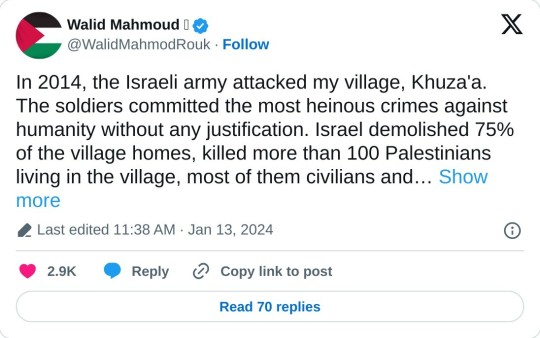
https://www.unrwa.org/newsroom/features/khuza%E2%80%99-ruins
#palestine#free palestine#free palestine free palestine free palestine#from the river to the sea palestine will be free#gaza#never forget
84 notes
·
View notes
Text
[ 📹 Footage from the Zionist bombing of a residential neighborhood in central Rafah, in the southern Gaza Strip on Tuesday, opening Ramadan with the mass slaughter of civilians.]
🇮🇱⚔️🇵🇸 🚀🏘️💥🚑 🚨
DEATH AND DESTRUCTION EVERYWHERE ON THE 157TH DAY OF ISRAEL'S ONGOING GENOCIDE IN THE GAZA STRIP
Opening the first day of Ramadan, on the 157th day of Israel's ongoing war of genocide against the Palestinian population of the Gaza Strip, the Israeli occupation forces (IOF) committed a total of 7 new massacres of Palestinian families, resulting in the deaths of 67 Palestinian civilians, mostly women and children, and wounding another 106 others over the previous 24-hours.
In what has become a daily atrocity, Israeli occupation soldiers opened fire on hungry civilians waiting for food aid at the Al-Kuwaiti roundabout in Gaza City, shooting starving people in the street and resulting in the deaths of no less than 9 civilians, while wounding another 20 others.
In the north of Gaza, Zionist atrocities continued when occupation warplanes bombed a civilian home belonging to the Al-Saqqa family in the Al-Zaytoun neighborhood of Gaza City, killing at least seven civilians, including five children, and wounding another six others.
Similarly, Zionist fighter jets bombarded the Abu Shamala family home, also in the Al-Zaytoun neighborhood, slaughtering 16 civilians, including the wife of journalist Mufid Abu Shamala, along with all his children.
Occupation artillery fire also concentrated on several areas across the northern Gaza Strip, including the Al-Sabra, Tal al-Hawa, and Sheikh Ajlin neighborhoods of Gaza City, murdering three Palestinians who were transported to Al-Shifa Medical Complex.
Meanwhile, in central Gaza, intense bombardment and artillery shelling targeted several areas, including various refugee camps while targeting civilian residences and town squares.
Zionist forces also detonated another residential town square in the Al-Maghazi Refugee Camp after forcefully evacuating local residents, while Israeli artillery forces shelled several other targets across central Gaza, including the Al-Nuseirat Refugee Camp, Al-Bureij, Deir al-Balah and Al-Maghazi.
At the same time, IOF warplanes bombed the Abu Sinjar family home in Deir al-Balah, resulting in the martyrdom of eight civilians, while several others remain missing under the rubble, according to local medical sources.
In another atrocity, Israeli occupation aircraft bombed a civilian home in the village of Bani Suhaila, east of Khan Yunis, in the southern Gaza Strip, with a simultaneous bombing in the city center, killing and wounding a number of Palestinians.
In a similar crime, north of Khan Yunis, in south-central Gaza, occupation warplanes flattened an entire residential square in the center of the town of Al-Qarara with an intense bombardment, resulting in the martyrdom of no less than 11 civilians.
In two separate Zionist airstrikes, occupation warplanes targeted local residents in the town of Al-Qarara, killing at least five civilians, some of whom were taken to Al-Aqsa Martyrs Hospital in Deir al-Balah, while others were taken to the European Gaza Hospital.
IOF artillery shelling also targeted the Abasan Al-Kabira neighborhood of Khan Yunis, as well as the Khuza'a neighborhood, east of Khan Yunis.
The slaughter continued with the Zionist bombing of a civilian residence in the El Geneina neighborhood in the city of Rafah, in addition to bombings targeting the vicinity of local shelters and civilian tents belonging to displaced families.
Occupation aircraft also bombed a civilian residence belonging to the Saleh family in the Al-Saudi neighborhood of Rafah city, wounding three Palestinians, while a second bombing targeting the Abu Taha family home luckily resulted in no reported injuries.
As a result of Israel's ongoing war of genocide in the Gaza Strip, the infinitely rising death toll now exceeds 31'112 Palestinian civilians killed, more than 25'000 of which, or over 70%, were among women and children according the United States Pentagon, while another 72'760 others have been wounded in Zionist strikes since Israel's aggression in Gaza began on October 7th, 2023.
#source1
#source2
#source3
#source4
#source5
#source6
#source7
#videosource
@WorkerSolidarityNews
#gaza#gaza strip#gaza news#gaza war#gaza genocide#genocide in gaza#genocide of palestinians#genocide#israeli genocide#israeli war crimes#war crimes#crimes against humanity#israel#israeli occupation forces#israeli occupation#palestine#war on gaza#palestine news#palestinians#middle east#israel palestine conflict#war#politics#news#geopolitics#world news#global news#international news#breaking news#current events
38 notes
·
View notes
Text
The Israeli occupation is trying to exploit the hours before the truce to cause a large number of martyrs in Gaza Strip!
💢🔻Less than 10 hours before the 7 AM ceasefire takes effect, the IOF escalates its genocidal campaign against Gazan hospitals, schools, and homes.

All areas of the Gaza Strip have been targeted in the last six hours.
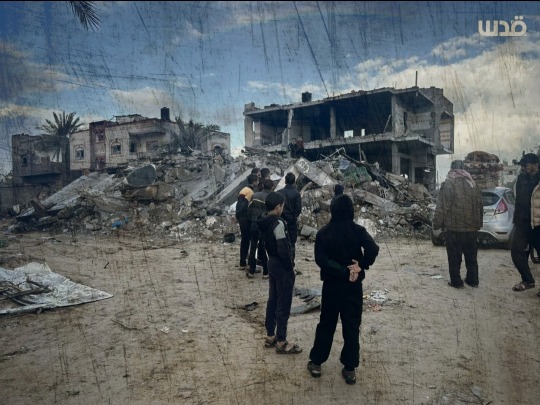
Just moments ago, 13 martyrs ascended after IOF warplanes bombed the Abu Hussein school, which is run by UNRWA and houses displaced people in Jabalia camp, northern Gaza. Several others are wounded. The IOF bombed the school a few days ago as well.
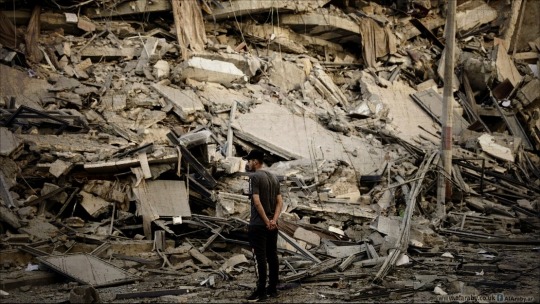
Additionally, all hospitals north of the Gaza Valley have ceased services. An IOF drone bombed the entrance of the Kamal Adwan Hospital a few hours ago.

In southern Gaza:
The vicinity of the Kuwaiti Hospital was targeted.
The number of martyrs in the bombing of the Al-Jorani family home in Rafah was raised to seven.
IOF warplanes destroyed three mosques in Khuza'a.
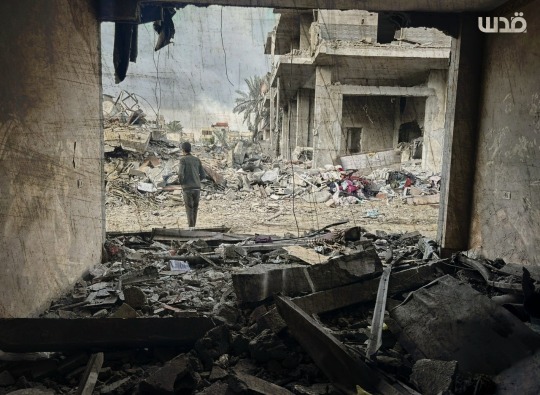

|
#from the river to the sea palestine will be free#gaza strip#gazaunderattack#palestine#free palestine 🇵🇸#gazaunderfire#طوفان الأقصى#help gaza#palestinian martyrs#free gaza#free palestine#israel is committing genocide#israel is a terrorist state#fuck israel#gaza under attack#gaza#save gaza#Gaza genocide#i stand with gaza#i stand with Palestine#all the world stand with gaza#al aqsa flood#glory to all martyres#casefireinGazaNOW#حسبنا الله ونعم الوكيل#Israel targets civilians in the Gaza Strip#israel is lying#israel is bombing gaza hysterically#Israel targets hospitals in the Gaza Strip#Israeli occupation forces arrest doctors and wounded as they flee from Al-Shifa Hospital in Gaza
57 notes
·
View notes
Text
Hi, I have another vetted fundraiser! The Abu Rouk family needs help escaping Gaza.
13 notes
·
View notes
Text

Israel's military killed the head of Khuza'a medical practice, doctor Ramez Najjar, along with his child during an attack on Khan Yunis, Gaza Tuesday, December 5th, 2023
-QNN-
#end the genocide#freegaza#freepalestine#end the apartheid#free palestine🇵🇸#free palestine#free gaza#from the river to the sea palestine will be free#justice for palestinians#justice for palestine#never forgive#never forget#say their names#gazaunderattack#gaza strip#save gaza#khan younis
14 notes
·
View notes
Text
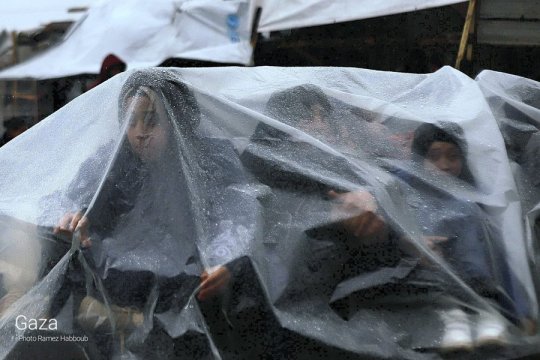
Using nylon bags, a family seeks shelter from the rain after the occupation destroyed their home in the village of Khuza'a, east of Khan Yunis, Gaza. November 28, 2023.
13 notes
·
View notes
Text
Des destructions majeures ont eu lieu à Khuza'a, à l'est de Khan Yunis, à la suite des raids menés par l'armée d'occupation.
#israeli occupation#israeli war crimes#israel is a terrorist state#israeli apartheid#israel is an apartheid state#israel#israël#israel apartheid#apartheid#israel occupation#occupation#sionisme#sionistes#war crimes#war criminals#crimes de guerre#crimes against humanity#palestinian lives matter#palestinian genocide#palestinians#free palestine#palestine#stand with palestine#support palestine#gaza#free gaza#gaza genocide#stand with gaza#genocide in gaza#genocide in palestine
4 notes
·
View notes
Text
On 26 October, the Palestinian Ministry of Health released the list of names of Palestinians killed since 7 October. Among them, from the Qudayh family, are:


Muslim Mahmoud Ahmed (78);
Salah Ibrahim Muhammad (67) and his son Ayman Salah Ibrahim (20);
Rasmiya Salem Khalil (65);
Suad Salem Salman (64);
Jawahir Suleiman Hamad (59);
Attaf Khalil Suleiman (57);
Iman Muhammad Ismail (55);
Muhammad Muslim Salem (49);
Nidal Atta Mahmoud (42);

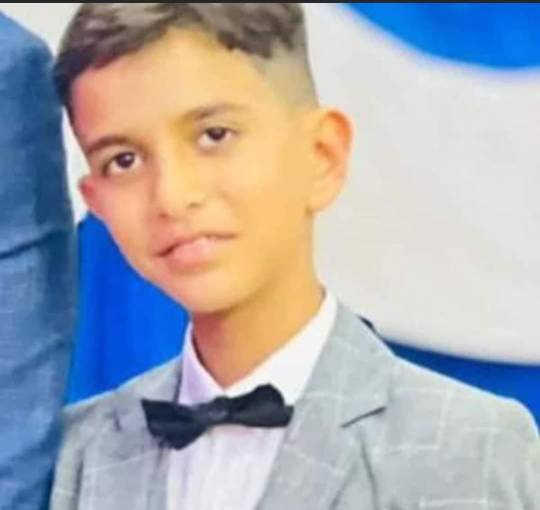
Suleiman Mahmoud Suleiman (42), his wife Hana Khaled Mahmoud (37), and their only children Rimas Suleiman Mahmoud (12) and Mahmoud Suleiman Mahmoud (11);
Hammad Khader Hammad (42) and his son Saif Hammad Khader (17);
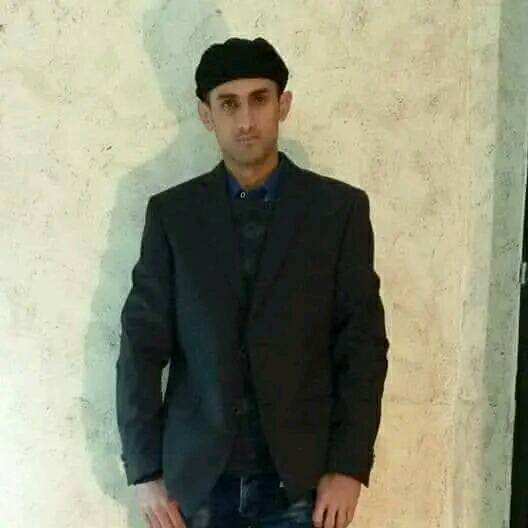
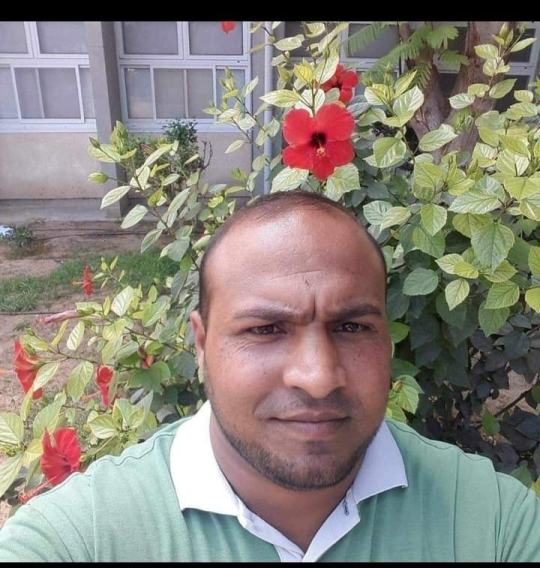
Muhammad Hossam Shehadeh (41);
Hanan Ibrahim Ismail (37);
Iyad Suleiman Salem (37);
Musab Fawzi Suleiman (36), an imam;
Junayd Jamal Mustafa (35), who was martyred in the attack on Rio Cafe in Khan Yunis;


Muntasir Juma Suleiman (35) and his brother al-Sayyed Juma Suleiman (33);
Maha Abdel Rahman Shaat (35);
Salman Jalal Fares (29);
Kamal Ayman Abdel Hadi (29);
Nail Kamel Odeh (27);


Alaa Fouad Ibrahim (27);
Ahmed Ibrahim Hamdan (25);


Abdullah Suleiman Fayez (22) and his brother Abood Suleiman Fayez;

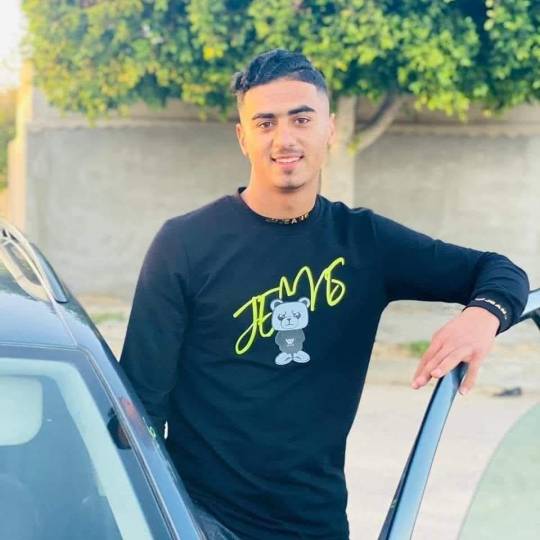
Ahmed Hatem Zaki (20);
Hani Ghassan Salem (19);
Mennatullah Wasfi Ahmed (16);


Maria Shadi Rajab (6) and her brothers Yasin Shadi Rajab (8) and Usama Shadi Rajab (10);


Rajab Ibrahim;
Shawqi Rajab;
Asad;
Shaima Abdul Hadi;
Ammuna Shawqi;

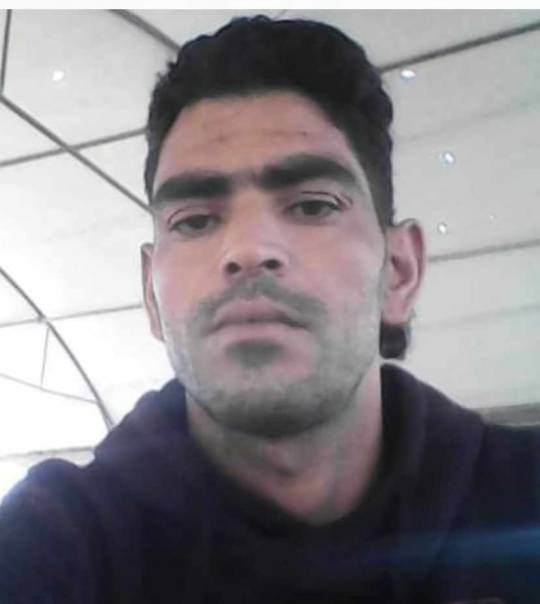
Walid Ahmed;
Ahmed Abdel Majid;
Juma;
Shadi Rajab;
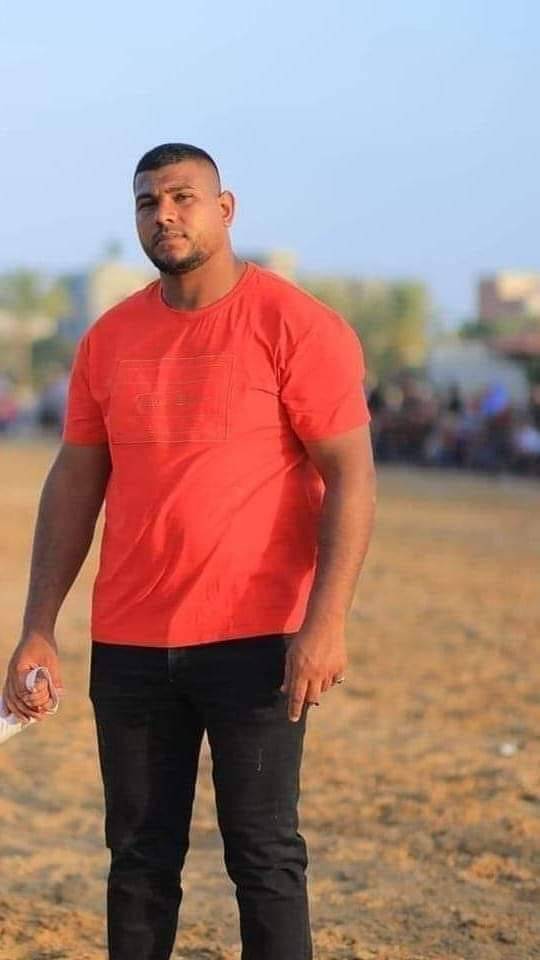
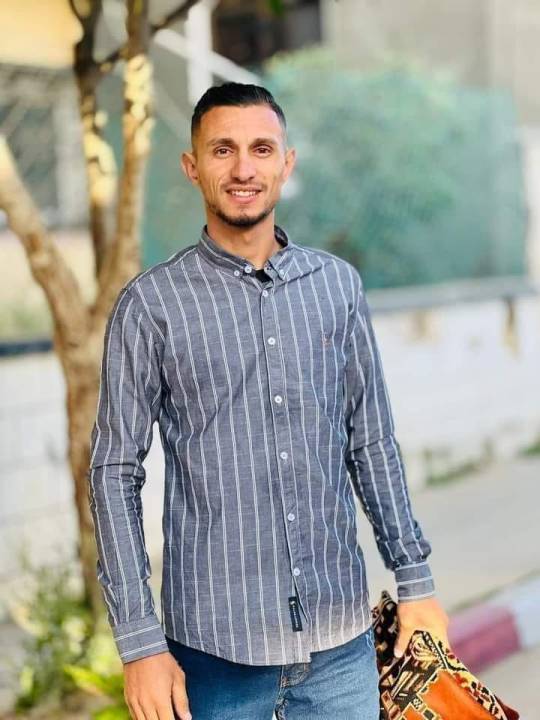
Muhammad Ibrahim;
Nail Raja;
Ataf Khalil and her daughters Nariman and Manna, who were martyred in Khan Younis after evacuating from Khuza'a;
Tahani Salama, who was martyred in Khan Younis after suffering a serious injury;

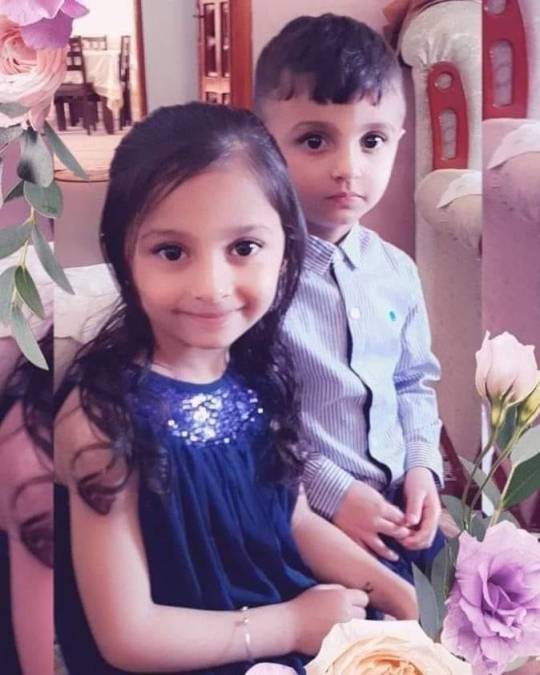
Iman Asaad and her children Zainab Fadi Rasmi (8), Naseem Fadi Rasmi (4), Muhammad Fadi Rasmi, and Ghazal Fadi Rasmi (9);
Ahmed Barham Abu Rajila;
Malak Bahaa Fathi and her siblings Yusuf Bahaa Fathi and Janan Bahaa Fathi;


Muhammad Muslim Muslim;
Alaa Bassem Salem (30), whose parents were martyred in 2003;



Wael Roc and his brothers Talal Roc, Junayd Roc, and Jamal Roc;
Ahmed Ziyada;
Salim Hamdan;
Jana Hani Deeb, a child;
Lamar Saber, her sisters, and their mother;
and Ibrahim Abd Rabbo.
You can read more about the human lives lost in Palestine on the Martyrs of Gaza Twitter account and here.
2 notes
·
View notes
Text
The IDF has released new interrogation footage of a Palestinian Islamic Jihad terrorist who appears to confess to raping an Israeli woman in a kibbutz in southern Israel during the Hamas-led October 7 onslaught.
The terrorist, Manar Qassem, who was captured by the IDF earlier this month in Khan Younis, says he is a member of Islamic Jihad's naval forces.
In the interrogation carried out by the Military Intelligence Directorate's Unit 504, Qassem is asked what he did on October 7,
to which he provides a detailed response. Qassem says he entered Israel through a breach in the Gaza border fence between the Khan Younis area towns of al-Fukhkhari and Khuza'a,
armed with a handgun and two grenades. He says that as he reached the unnamed kibbutz,
he entered the closest home, where he encountered a woman who was startled.
"I took her and threw her on the couch," Qassem tells the interrogators, recalling in detail what she looked like and what she was wearing.
"The devil took over me, I laid her down, started undressing her, and did what I did," he says.
Pressed by the interrogator as to what he did, Qassem responds by saying: "I slept with her."
Asked again, Qassem says "I raped her," according to the IDF.
The audio in the footage is unintelligible at some points, due to the military censoring the voice of the interrogator. "She pushed me, it didn't last long...
Two minutes.
Maybe a minute and a half," he says.
At that point, according to Qassem, two members of the al-Aqsa Martyrs' Brigades entered the home and put the woman together with her mother for a short while, before taking both out of the house.
Qassem says he was left alone and decided to head back to the Gaza Strip. He says he heard gunshots, and then shot one Israeli man near him, before throwing one of his grenades and fleeing the kibbutz.
The IDF says the footage is "further proof of the onslaught of murder and sexual violence by the terrorist organizations on October 7th, in an attempt to make the voices of those who can no longer tell be heard."
0 notes
Text
El Kassam Tugayları, Han Yunus'un doğusundaki Khuza'a bölgesinde Siyonist piyade kuvvetlerini anti-personel roketiyle hedef alarak doğrudan isabet sağladı.
0 notes
Text
UN LEADER UNIVERSEL : Partie 6
UNE VICTOIRE ÉCLATANTE: LE TRAITÉ DE HOUDAÏBIYA
Le Messager était un homme d'action. Il n'hésitait jamais lorsqu'il devait mettre en action ses plans ou ses décisions, car toute hésitation de sa part pourrait confondre ou démoraliser ses fidèles. Le Messager agissait toujours après consultation et délibération. Mais une fois qu'il avait décidé ou planifié quelque chose, il le mettait à l'œuvre immédiatement, sans jamais revenir sur sa décision et sans avoir de raison de la regretter. Avant d'agir, il prenait les mesures de précaution nécessaires, considérait les probabilités et les différentes alternatives et consultait les experts disponibles. La conséquente irrévocabilité de ses décisions était une raison importante de ses victoires et du fait que ses Compagnons le suivaient corps et âme.
Un événement digne d'être plus longuement expliqué est le Traité de Houdaïbiya. Le Messager avait dit à ses Compagnons qu'il avait rêvé qu'ils entreraient bientôt dans la Mosquée Sacrée de La Mecque en toute sécurité, avec leurs têtes rasées ou leurs cheveux raccourcis. Ses Compagnons, surtout les Émigrés, étaient ravis. Cette année-là, le Prophète se mit en route pour La Mecque avec 1400 hommes sans armes et en tenues de pèlerins.
Informés de cet événement, les Qoraïchites s'armèrent eux-mêmes ainsi que les tribus voisines pour ne pas laisser les musulmans entrer à La Mecque. Ils envoyèrent quelque 200 soldats, menés par Khalid ibn Walid et Ikrima ibn Abou Jahl, aussi loin que Qura' al-Ghamim. Voyant les musulmans approcher, ils rentrèrent à La Mecque pour répandre la nouvelle. Quand les musulmans parvinrent à Houdaïbiya, à environ 20 kilomètres de La Mecque, le Messager leur demanda de faire halte. Sachant qu'il y avait une pénurie d'eau, il lança une flèche au fonds du seul puits de Houdaïbiya. L'eau commença à jaillir et à remplir le puits. Chacun en buvait, accomplissait ses ablutions et remplissait leurs gourdes.
Comme les Mecquois refusaient de laisser entrer les musulmans à La Mecque, le Messager envoya Budayl ibn Warqa, un membre de la tribu Khuza'a (l'allié des musulmans), annoncer que les musulmans étaient venus pour le pèlerinage et n'étaient donc pas armés. Les Qoraïchites, en réponse, envoyèrent Urwa ibn Mas'ud al-Thaqafi. En parlant au Messager, Urwa tenta de saisir sa barbe, un signe de moquerie. Mughira ibn Shu'ba frappa la main de Urwa, disant qu'il la lui amputerait s'il osait recommencer, car sa main était impure.
Mughira était le cousin de Urwa, et avait accepté l'islam environ deux mois auparavant. En fait, il n'y avait que quelques mois de cela que Urwa avait payé le prix du sang pour un crime commis par Mughira. Comme l'islam avait transformé Mughira! L'engagement des Compagnons pour leur cause et leur dévotion au Messager choquèrent Urwa qui rentra chez les Qoraïchites et dit: «J'ai rendu visite à Crésus, César et le Négus. Mais aucun de leurs sujets ne sont aussi dévoués à leurs dirigeants que ses Compagnons ne le sont envers Mohammed. Je vous conseille de ne pas lutter contre lui.»
Les Qoraïchites ne tinrent pas compte de son conseil et ne firent pas bon accueil à Kharash ibn Umayya, que le Messager avait envoyé après Urwa. Kharash fut suivi de Othman ibn Affan, qui avait de puissants parents parmi les Qoraïchites. Bien que Othman fût venu pour négocier, les Mecquois l'emprisonnèrent. Comme il n'était toujours pas rentré au moment où on l'attendait, des rumeurs circulèrent selon lesquelles il aurait été tué. C'est alors que le Prophète, assis sous un arbre, fit promettre à ses Compagnons sous serment qu'ils resteraient unis et se battraient jusqu'à la mort. Il représentait l'absent Othman par procuration dans ce serment. Seul Jadd ibn Qays, qui était caché derrière un chameau, ne prêta pas serment.
La révélation qui descendit à cette occasion dit:
DIEU A TRÈS CERTAINEMENT AGRÉÉ LES CROYANTS QUAND ILS T'ONT PRÊTÉ LE SERMENT D'ALLÉGEANCE SOUS L'ARBRE. IL A SU CE QU'IL Y AVAIT DANS LEURS CŒURS, ET A FAIT DESCENDRE SUR EUX LA QUIÉTUDE, ET IL LES A RÉCOMPENSÉS PAR UNE VICTOIRE PROCHE. (48:18)
Dans ce moment de tension, un nuage de poussière apparut au loin. Il s'avéra une délégation mecquoise menée par Suhayl ibn Amr. Quand le Messager de Dieu apprit cela, il prit son nom (signifiant facilité) comme un bon présage et dit à ses Compagnons: «Une détente s'est produite.» Finalement, les Qoraïchites acceptèrent une trêve et le Traité de Houdaïbiya fut conclu.
Selon ce traité, le Prophète et ses fidèles pourraient faire le pèlerinage seulement l'année suivante, et à ce moment-là les Mecquois évacueraient la ville pendant trois jours. Le traité promettait une trêve de dix ans, stipulait aussi que les gens ou les tribus pourraient rejoindre ou s'allier avec qui ils voulaient, et que les sujets qoraïchites ou les personnes qui étaient à leur charge qui s'étaient enfuis à Médine devraient être restitués. Cette dernière condition n'était pas réciproque et fut donc opposée par le camp musulman. Elle choquait des gens comme Omar qui questionnait le Messager à ce propos. Elle était pourtant d'une moindre importance. Les musulmans renvoyés à La Mecque n'allaient certainement pas renoncer à l'islam; au contraire, ils allaient être des agents secrets au sein de La Mecque.
Juste avant que le traité ne fût signé, Abou Jandal, le fils de Suhayl, arriva enchaîné et demanda à se joindre aux musulmans. Or il fallait que le Messager le restituât à son père en larmes. Cependant, il lui souffla à l'oreille: «Dieu te sauvera bientôt, toi et ceux qui sont comme toi.»
Peu après que le traité fut signé, Utba ibn Asid (aussi connu sous le nom d'Abou Bassir) s'enfuit pour Médine. Les Qoraïchites envoyèrent deux hommes pour exiger sa restitution. Sur le chemin du retour vers La Mecque, Abou Bassir s'échappa, tua un homme et en blessa un autre. Le Messager, citant les termes du traité, ne lui permettait pas de rester à Médine. Il s'installa donc à Iyss, un endroit sur la route qui va de La Mecque à la Syrie. Les musulmans tenus à La Mecque se joignirent peu à peu à Abou Bassir. À mesure que ce village grandissait, les Mecquois commençaient à y voir une menace potentielle pour leur route marchande. Cela les força à demander au Messager d'annuler la clause concernée du traité et d'admettre les Mecquois qui fuyaient vers Médine.
Le Coran appela le Traité de Houdaïbiya «une victoire éclatante»: En vérité Nous t'avons accordé une victoire éclatante. (48:1) Cela s'avéra vrai pour plusieurs raisons, parmi lesquelles:
En signant ce traité après des années de conflit, les Qoraïchites admettaient que les musulmans étaient leurs égaux. En fait, ils avaient abandonné leur lutte mais sans oser l'admettre. Voyant les Mecquois agir avec le Prophète comme avec un égal et un dirigeant, une foule grandissante de nouveaux convertis affluèrent de toute l'Arabie vers Médine.
Beaucoup de Qoraïchites allaient profiter de la paix conséquente au traité en pouvant enfin réfléchir sur ce qui se passait. Des Qoraïchites bien en vue comme Khalid ibn Walid, Amr ibn al-As et Othman ibn Talha, tous célèbres pour leurs talents militaires et politiques, acceptèrent l'islam. Othman était la personne à qui était confiée les clés de la Ka'ba, et après la conquête de La Mecque, le Messager l'honora de la même fonction.
Les Qoraïchites avaient l'habitude de regarder la Ka'ba comme leur bien exclusif, et faisaient payer une certaine somme aux visiteurs. En n'assujettissant pas à cette condition les musulmans venus pour leur pèlerinage reporté, les Qoraïchites mirent involontairement fin à leur monopole. Les tribus bédouines réalisaient enfin que les Qoraïchites n'avaient pas le droit de revendiquer la propriété exclusive de la Ka'ba.
À cette époque, il y avait des femmes et des hommes musulmans qui vivaient à La Mecque. Tout le monde à Médine ne savait pas qui ils étaient. Certains servaient d'espions au Messager. Si un combat avait eu lieu à La Mecque, la victorieuse armée musulmane aurait pu tuer certains d'entre eux. Cela aurait causé une grande angoisse personnelle, ainsi que le martyre ou l'identification des espions du Prophète. Le traité empêcha un tel désastre.
Le Coran signale ce fait:
C'EST LUI QUI, DANS LA VALLÉE DE LA MECQUE, A ÉCARTÉ LEURS MAINS DE VOUS, DE MÊME QU'IL A ÉCARTÉ VOS MAINS D'EUX, APRÈS VOUS AVOIR ACCORDÉ LA VICTOIRE SUR EUX. ET DIEU VOIT PARFAITEMENT CE QUE VOUS OEUVREZ. CE SONT EUX QUI ONT MÉCRU ET QUI VOUS ONT OBSTRUÉ LE CHEMIN DE LA MOSQUÉE SACRÉE [ET ONT EMPÊCHÉ] QUE LES OFFRANDES ENTRAVÉES PARVINSSENT À LEUR LIEU D'IMMOLATION. S'IL N'Y AVAIT PAS EU DES HOMMES CROYANTS ET DES FEMMES CROYANTES (PARMI LES MECQUOIS) QUE VOUS NE CONNAISSIEZ PAS ET QUE VOUS AURIEZ PU PIÉTINER SANS LE SAVOIR, VOUS RENDANT AINSI COUPABLES D'UNE ACTION RÉPRÉHENSIBLE... [TOUT CELA S'EST FAIT] POUR QUE DIEU FASSE ENTRER QUI IL VEUT DANS SA MISÉRICORDE. ET S'ILS [LES CROYANTS] S'ÉTAIENT SIGNALÉS, NOUS AURIONS CERTES CHÂTIÉ D'UN CHÂTIMENT DOULOUREUX CEUX QUI AVAIENT MÉCRU PARMI [LES MECQUOIS]. (48:24-25)
Le Prophète fit le petit pèlerinage l'année suivante. L'attestation: «Il n'y a de dieu que Dieu, et Mohammed est le Messager de Dieu» résonna à travers toute La Mecque. Les Qoraïchites, campés sur la colline d'Abou Qubays, entendirent cet augure du triomphe prochain de l'islam. En fait, c'était la réalisation par Dieu de la vision qu'Il avait montrée à Son Messager:
DIEU A ÉTÉ VÉRIDIQUE EN LA VISION PAR LAQUELLE IL ANNONÇA À SON MESSAGER EN TOUTE VÉRITÉ: VOUS ENTREREZ DANS LA MOSQUÉE SACRÉE SI DIEU VEUT, EN TOUTE SÉCURITÉ, AYANT RASÉ VOS TÊTES OU COUPÉ VOS CHEVEUX, SANS AUCUNE CRAINTE. IL SAVAIT DONC CE QUE VOUS NE SAVIEZ PAS. IL A PLACÉ EN DEÇÀ DE CELA (LA TRÊVE DE HOUDAÏBIYA) UNE VICTOIRE PROCHE. (48:27)
Le traité permit au Messager de s'occuper des autres. Dans les expéditions de l'après traité, les musulmans conquirent les redoutables citadelles juives de Khaybar, leur disant soit de se convertir soit d'accepter l'autorité musulmane en payant un tribut pour leur protection (djizya). Leurs voisins, ainsi que d'autres tribus arabes, étaient impressionnés par la puissance grandissante de l'Etat islamique.
Les musulmans observèrent fidèlement les termes du traité; or une tribu alliée aux Mecquois n'en fit pas autant. Les Banu Bakr attaquèrent les Banu Khuza'a, qui étaient alliés au Prophète. Ainsi, en décembre 629, le Messager se lança avec une armée de 10 000 hommes contre La Mecque, et la captura en ne rencontrant presque aucune résistance au premier jour de l'an. La Ka'ba fut purifiée des idoles et, durant les quelques jours suivants, les Mecquois acceptèrent l'islam. Cela devait arriver car:
C'EST LUI QUI A ENVOYÉ SON MESSAGER AVEC LA GUIDÉE ET LA RELIGION DE VÉRITÉ [L'ISLAM] POUR LA FAIRE TRIOMPHER DE TOUTE AUTRE RELIGION. DIEU SUFFIT COMME TÉMOIN. MOHAMMED EST LE MESSAGER DE DIEU. ET CEUX QUI SONT AVEC LUI SONT DURS ENVERS LES MÉCRÉANTS, MISÉRICORDIEUX ENTRE EUX. TU LES VOIS INCLINÉS, PROSTERNÉS, RECHERCHANT DE DIEU GRÂCE ET AGRÉMENT. LEURS VISAGES SONT MARQUÉS PAR LA TRACE LAISSÉE PAR LA PROSTERNATION. TELLE EST LEUR IMAGE DANS LA THORA. ET L'IMAGE QUE L'ON DONNE D'EUX DANS L'ÉVANGILE EST CELLE D'UNE SEMENCE QUI SORT SA POUSSE, PUIS SE RAFFERMIT, S'ÉPAISSIT, ET ENSUITE SE DRESSE SUR SA TIGE, À L'ÉMERVEILLEMENT DES SEMEURS. [DIEU] PAR EUX [LES CROYANTS] REMPLIT DE DÉPIT LES MÉCRÉANTS. DIEU PROMET À CEUX D'ENTRE EUX QUI CROIENT ET FONT DE BONNES OEUVRES, UN PARDON ET UNE ÉNORME RÉCOMPENSE. (48:28-29)
#musulman#coran#allah#dieu#islam#se convertir#converti#convertie#revert#reverthelp#equipe reverthelp#converthelp#musulman revert#musulman converti#se convertir à l'islam#islam revert#rappel#prière#salah#dua#prier#musulmane#hiajb#hijabi#muhammad#bienvenu en islam#converti à islam#comment se convertir à islam#religion
0 notes
Text
Arabian Paganism: Goddess Al-Lāt

(Above image: Sculpture of Al-Lāt)
Al-Lāt (Arabic: اللات) is the Meccan mother goddess and the chief deity of the tribe of Banu Thaqif whose major seat of worship was a popular shrine which was located at the west Arabian town of at-Ta’if in the Hijaz region of Arabia. The idol of al-Lāt was a cube of white granite, which was in the custody of the clan of Banu ‘Attab ibn Malik of the tribe of Banu Thaqif; the nearby tribes of Banu Lihyan; Banu Hawazin; Banu Khuza'a, and Banu Quraysh also making regular pilgrimages to Ta'if to offer their worship. The goddess was reputed to enjoy offerings of barley porridge (sawiq) and small cereal cakes: her devotees prepared these dishes especially, as barley and other grains were considered symbolic of her. Animals that were considered sacred to al-Lāt included gazelle; lions, and camels, among others depending on the region and tribe, as the cult of the goddess was found all across Arabia and as far as Palmyra in southern Syria.
In the pantheon of the Hijaz (western Arabia) specifically, al-Lāt was one of the three chief goddesses of Mecca and one of the three daughters of the high god Allāh: her main role being an earth-goddess who was responsible for the fertility and soil quality of Ta'if and elsewhere in the Hijaz region, thus making her highly important among the Arabs. The goddess had many epithets throughout the Hijaz including Umm al-Alihah (Mother of the Gods) and Umm ash-Shams (Mother of the Sun goddess) and was also worshiped in order to gain protection whilst travelling. At the holy sanctuary (haram) of al-Lāt in the town of Ta'if, all life within was considered inviolable: no plant could be gathered; no tree could be felled; no animal could be killed and no human blood could be shed in accordance with sacred law.
The farmers and merchants of Ta'if who belonged to the ruling tribe of Banu Thaqif venerated al-Lāt as the goddess of vegetation, agriculture and fertile soil; their livelihood, wealth and tribal status being largely dependent on the trade of their crops, which were mainly of barley; figs; roses, and dates. The fertility and prosperity of the region was considered by the Banu Thaqif to be a blessing upon them by their tribal goddess al-Lāt; who eventually became the chief goddess and guardian deity of the town of Ta'if, as she was the seen as the divine provider of trade, wealth and power. The shrine of al-Lāt in Ta'if eventually became a place of trade and pilgrimage among the Arabs, often sharing the large amount of pilgrims from nearby Mecca. Historically, the town of Ta'if was famous as "the garden of the Hijaz" - the fertility of the region being attributed to the power of its tutelary goddess.
The pan-Arabian goddess al-Lāt had her counterparts across the Arabian peninsula under many different names in the Semitic languages and dialects, for example: to the people of Ta'if, she was also known by the name of ar-Rabbat ('The Lady'); to the Himyarites, she was worshiped as 'Athiratan or Ilāt, the mother of Athtar; the Hadramites to the east of the Himyar called her Ilāhatan, and the Aramaeans of Syria knew her as Elat. As al-Lāt was the goddess of the earth, she was worshiped in nearby Syria as 'Arsay and in Canaan as Aretzaya: these names derived from the Aramaean and Hebrew words for 'earth', 'Ars' and 'Aretz' (also cognate to Arabic ardh). The earth goddess in Canaan and Syria was considered to be a protector of the spirits of the dead who dwelt under the earth.
In the religion of the Meccans and the other pagan tribes of the Hijaz, al-Lāt was not the wife of the high god Allāh but was one of his daughters, along with the other two chief goddesses, Manāt and al-'Uzzā. The cult of al-Lāt was not only popular in the Hijazi towns of Ta'if and Mecca; the Nabataean Arabs of southern Jordan worshiped her as an earth goddess and as the mythical consort of their chief deity Dhu'l-Shara, who was a god of vegetation and mountain springs. The Onyx stone, a variety of chalcedony, was among the treasures along with gold that were discovered at the shrine of al-Lāt in Ta'if, and as such is considered sacred to the goddess. In the inscriptions and writings of the Safaitic Bedouin who dwelt in the Syro-Arabian desert in pre-Islamic times, al-Lāt was called upon to show mercy and grant ease, prosperity and well-being to the worshiper; in addition to being invoked for protection against an enemy, vengeance against aggressors and favorable weather.

(Above image: Al-Lāt by Grace D. Palmer)
[Text Source]
85 notes
·
View notes
Text
[ 📹 Scenes from destroyed neighborhoods in Khan Yunis where Resistance forces can be heard confronting the invading Israeli occupation army in the Al-Amal neighborhood.]
🇮🇱⚔️🇵🇸 🚀🏡💥🚑 🚨
💥ISRAELI OCCUPATION COMMITS 8 NEW MASSACRES OF PALESTINIAN FAMILIES ON THE 141ST DAY OF WAR IN GAZA💥
The Israeli occupation forces (IOF), on the 141st day of Israel's genocidal war in the Gaza Strip, committed 10 new massacres of Palestinian families, resulting in the deaths of 104 civilians, mostly women and children, and wounded another 160 others over the previous 24-hours.
Intense battles play out in the Al-Amal neighborhood of Khan Yunis as Resistance Forces confront invading Israeli soldiers and armored vehicles, while IOF aircraft continues to destroy large sections of residential neighborhoods in Khan Yunis.
Meanwhile, according to the Israeli human rights organization B'tselem, the Israeli occupation intends on creating a "buffer zone" one kilometer wide along the entire border between the Gaza Strip and the Israeli entity, about 60km in total, in which Palestinians, even ones who cultivated lands along the border, will not be allowed to access.
This buffer zone is intended to be covered by paved roads, with Israeli outposts and surveillance equipment, to essentially enforce the outdoor prison of Gaza. To create this buffer zone, the Israeli occupation is "currently destroying almost everything in the area it has designated for it," with one Israeli soldier describing his work as "flattening everything."
B'tselem says the Israeli occupation has demolished 1'072 of 2'824 structures located a kilometer or less from the border, the majority of which were Palestinian homes.
According to Adi Ben Nun from the Geography Department of Hebrew University, in Khan Yunis alone, 704 of 1'048 buildings, almost 70% of all structures, have been demolished by the Israeli occupation army. B'tselem says that Corey Scher of the City University of New York and Jamon Van Den Hoek of Oregon State University put the number of demolitions even higher, estimating that at least 1'329 buildings have been completely destroyed by IOF soldiers. The same can be replicated along the entire border with "Israel".
Meanwhile, Israeli warplanes have continued the work of flattening the Gaza Strip, launching several firebelts targeting residential neighborhoods in the village of Khuza'a, east of Khan Yunis, in the southern Gaza Strip.
At the same time, local medical sources say Israeli warplanes and artillery concentrated on Khan Yunis resulted in the deaths of at least 19 Palestinians.
Also in Khan Yunis, Israeli fighter jets bombed the Ammer Bin Yasser mosque in the Al-Shahayda neighborhood, north of Abasan Al-Kabira, east of Khan Yunis.
Occupation armored vehicles and soldiers continue to besiege the Nasser Medical Complex in Khan Yunis, putting the hospital out of service at this time.
Occupation aircraft also bombarded residential buildings in the Al-Amal neighborhood, west of Khan Yunis, while IOF jets also committed new massacres across residential neighborhoods in the central Gaza Strip.
In Deir al-Balah, in the central Gaza Strip, occupation artillery and warplanes bombed the Abu Zuaiter family home, killing 25 civilians who were transported to Al-Aqsa Martyrs Hospital.
Israeli artillery shelling also targeted Zamzam family home in the Al-Maghazi Refugee Camp, killing a woman and wounding several others.
Several other civilians were also wounded by the artillery fire of Israeli gunboats along the coast near the Nuseirat Refugee Camp.
Elsewhere, Israeli aircraft launched firebelts targeting the Al-Ghurais family home in the Nuseirat Camp, in the central Gaza Strip, resulting in the deaths of 9 civilians and wounding others.
In the south of Gaza, Israeli fighter jets launched a firebelt on the Abu Muammar family home east of the city of Rafah, killing at least 11 civilians and wounding several others.
At the same time, Israeli occupation snipers posted on local rooftops shot and killed two civilians, Amer Al-Bawab and his son, in the Al-Nasr neighborhood of Gaza City, while another woman was killed after occupation air raids on the Al-Zaytoun neighborhood.
In another horrific atrocity by the Israeli occupation forces, occupation warplanes bombed the Shaheen family home in central Rafah, which also housed members of the Abu Hamra and Abu Sultan families, resulting in the murder of 7 Palestinian civilians and wounding several others.
At the same time, occupation fighter jets carried out a series of airstrikes targeting areas near the border with Egypt, in the areas where roughly half a million displaced Palestinians have settled in tents in unbearable and dangerous conditions.
As a result of Israel's ongoing war of genocide in the Gaza Strip, after 141 days of all-out war on a civilian population, more than 36'000 Palestinians are dead or missing, the majority of which are women and children, while over 60'000 Palestinians have been wounded, including more than 11'000 injuries which require travel abroad for treatment.
#source1
#source2
#source3
#source4
#videosource
@WorkerSolidarityNews
#gaza#gaza strip#gaza news#gaza war#gaza massacre#gaza genocide#war on gaza#genocide in gaza#genocide of palestinians#israeli genocide#israeli war crimes#war crimes#crimes against humanity#israeli occupation forces#israel#israeli occupation#palestine#palestine news#palestinians#middle east#war#israel palestine conflict#politics#news#geopolitics#world news#global news#international news#breaking news#current events
34 notes
·
View notes
Text
**Caratteristiche del Dajjal**
Il Dajjal inviterà alla religione con affabilità e travierà molti fedeli. Il Messaggero di Allah (s.A.'a.s.) ci ha dato una sua descrizione per poterlo subito individuare, infatti ha detto: «Quando dormivo mi sono visto mentre facevo il tawaf attorno alla Ka'ba quando ho visto un uomo rossiccio [chiaro] con i capelli lisci e l'acqua gocciola – viene versata – dalla sua testa. Chiesi: "Chi è questo?" Dissero: "Il figlio di Maria". Allora andai verso un'altro uomo con un un corpo rosso con la testa riccia e senza un occhio. Il suo occhio [destro] era come un chicco d'uva sporgente. Mi dissero: "Questo è il Dajjal". L'uomo che gli assomigliava di più era Ibn Qatan un uomo dei Khuza'a» (Bukhari 7128).
Inoltre il Messaggero di Allah (s.A.'a.s.) ha detto: «Non è stato dato profeta che non abbia avvisato il suo popolo del guercio bugiardo. Attenzione lui è guercio e il vostro Signore non è guercio, ed ha tra gli occhi scritto: kafir» (Bukhari 7131). Il Dajjal avrà dunque scritto tra gli occhi "Kafir" (miscredente) oppure "Kfr" (la radice trilittera della parola "Kafir").
Le capacità di cui dispone per diffondere il male:
Il Dajjal avrà grandi capacità per attrarre i fedeli al male e alla miscredenza. Ad esempio si muoverà velocemente, infatti venne chiesto al Messaggero di Allah (S.A.a.s.): «"Quanto velocemente si muoverà sulla terra?" Rispose: "Come le nuvole spinte dal vento"» (Muslim 2937). Ma non potrà entrare a Mecca e a Medina: Messaggero di Allah (s.A.'a.s.) ha detto: «Non vi sarà paese che non venga calpestato dal Dajjal, tranne Mecca e Medina» (Bukhari e Muslim 2943). Il Dajjal sarà aiutato anche dagli šayatin: Messaggero di Allah (s.A.'a.s.) ha detto: «Tra le sue fitna c'è quella che dirà ad un beduino: "Vuoi vedere che faccio resuscitare tua madre e tuo padre? Testimonierai poi che io sono il tuo Signore?" Risponderà: "Si". E gli šayatin prenderanno la forma di suo padre e di sua madre e diranno: "Figlio seguilo, egli è il tuo Signore"» (Hakim e Khuzaima). Gli esseri inanimati e gli animali obbediranno ai suoi ordini: il Messaggero di Allah (s.A.'a.s.) ha detto: «Egli andrà dalla gente e li inviterà [ad una falsa religione] e loro crederanno in lui e gli risponderanno. Egli ordinerà al cielo e pioverà, alla terra e cresceranno le piante. E andranno da loro il loro bestiame senza spruzzare nulla e si gonfieranno le mammelle e si ingrosseranno, poi verrà ad un popolo e li inviterà, ma loro rifiuteranno il suo invito, e lui si allontanerà e diventeranno poveri, non gli rimarrà nulla delle loro ricchezze, e andrà tra la devastazione e gli intimerà: "Fai uscire i tuoi tesori", verranno i suoi tesori come api» (Muslim 2937).
La durata della permanenza del Dajjal sulla terra:
Fu chiesto al Messaggero di Allah (S.A.a.s.): «"Quanto tempo resterà sulla terra?" Rispose: "Quaranta giorni, un giorno sarà come un anno, un giorno come un mese, un giorno come un venerdì e il resto come giorni dei vostri giorni" Chiedemmo: "E in quel giorno che è come un anno ci saranno le preghiere di un giorno?" Rispose: "No, dovrete considerarlo per la sua durata"» (Muslim 2937).
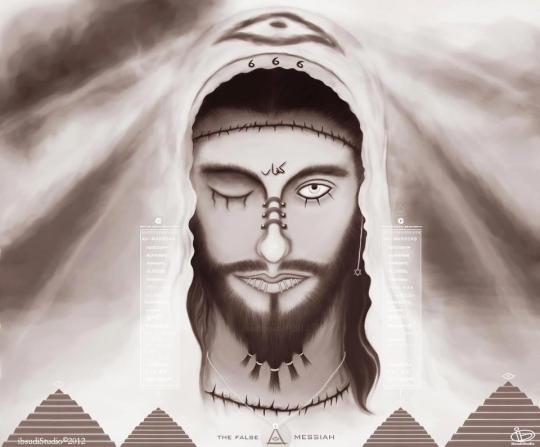
26 notes
·
View notes
Link
The Prophet wanted to verify the news of what happened to Bani Khuza'a after the news reached him, so he sent a man to the Quraysh to give her the choice to pay the blood money for the slain of Bani Khuza'a, or the Quraish to turn back on Bani Bakr their oath Those who raided are from the sons of Nafthat from Bani Bakr, or they renounce the covenant with the Messenger of God, so their answer was to renounce the covenant, and with this the Messenger confirmed their position and was trusted, and the Quraysh were acquitted from the Messenger of God, but they regretted after that, and knew their mistake, so they wanted to correct their position. And the confirmation of the covenant, so they sent Abu Sufyan to the Messenger - may God bless him and grant him peace -. To renew the covenant, when the Messenger of God knew, he said: (As if you, Abu Sufyan, came to increase in the covenant and increase in the period) and when he arrived in Madinah he tried with the Messenger of God but did not answer him, then he went to Abu Bakr, to Umar, Ali and Fatimah, and none of them answered him. So, he returned to Makkah without making a covenant with the Messenger. Today we present to you a new video from the series of the Prophet’s conquests on the authority of Abu Sufyan and the conquest of Mecca entitled “Before the Conquest of Makkah, Part Two.”
1 note
·
View note